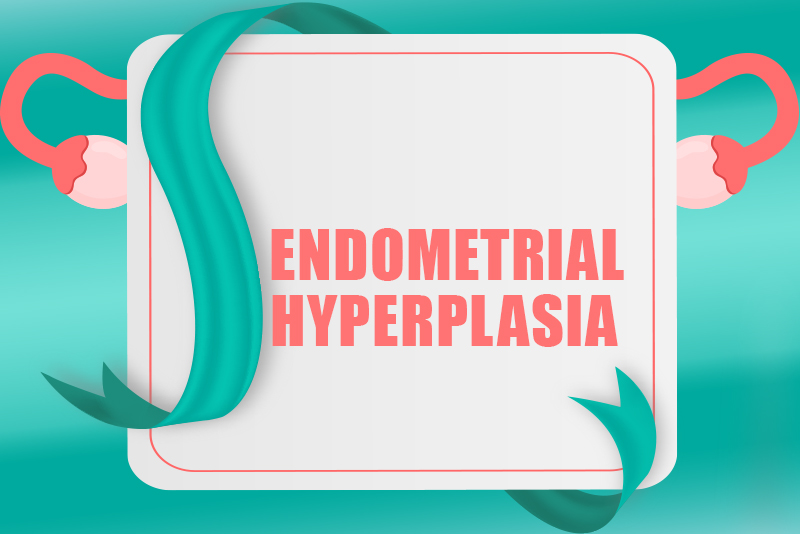Endometrial hyperplasia is a gynecology condition wherein the uterine lining (endometrium) thickens, causing heavy or abnormal bleeding. Endometrium is the lining that is shed during the menstrual period. The condition typically occurs during or after menopause. It most commonly occurs in women who are transitioning to or just completed menopause. In some women, the condition may resolve without any treatment. In other cases, hormone treatment or surgery may be required. If left untreated, the condition may progress to a cancer of the lining of the womb. Billing and coding for gynecology conditions can be challenging. While gynecologists focus on patient care, professional medical billing companies can support them in managing the claim submission tasks and thus achieve on-time reimbursement.
Endometrial hyperplasia is rare. Reports suggest that the condition affects approximately 133 out of 100,000 people assigned female at birth (AFAB). Often, the condition is caused by the production of excess estrogen without progesterone, which leads to cell overgrowth. Other factors that increase the risk of endometrial hyperplasia include – age above 35 years, starting menstruation at a young age, reaching menopause at a late age, obesity, having a family history of uterine, ovarian, or colon cancer and other health conditions such as diabetes, thyroid disease, or gallbladder disease.
Types of Endometrial Hyperplasia and Symptoms
Endometrial hyperplasia is classified into two different types – depending on whether they involve unusual cells, known as atypia. The primary type is endometrial hyperplasia without atypia – which doesn’t involve any unusual cells. The second type is Atypical endometrial hyperplasia characterized by an overgrowth of unusual cells and is considered precancerous. Understanding the type of endometrial hyperplasia is important to better understand the patient’s cancer risk and choose the most effective treatment. Medical documentation should be accurately done using ICD-10 diagnosis codes and relevant CPT codes.
Unusual uterine bleeding is one of the main symptoms of endometrial hyperplasia. Other symptoms include – short menstrual cycles (less than 21 days), heavy menstrual bleeding, bleeding after menopause and not having a period at all (amenorrhea). In fact, many of these symptoms are common in people transitioning to menopause.
Diagnosis and Treatment
As endometrial hyperplasia can cause abnormal uterine bleeding, diagnosis of this condition may begin with a detailed medical history evaluation. Based on the medical history evaluation, gynecologists may suggest a combination of certain tests like – Transvaginal ultrasound, Hysteroscopy and biopsy – for detailed evaluation. Treatment options generally consist of hormone therapy or surgery. Hormone therapy involves consumption of progestin – a synthetic form of progesterone – available in pill form as well as injection or intrauterine device. Progestin comes in many forms – Oral progesterone therapy (like swallowing a pill), intrauterine device (IUD) containing progesterone, injection (Depo-Provera®) and vaginal cream or gel. Healthcare providers may also recommend a hysterectomy to remove the uterus if the condition worsens or cancerous cells develop, or the condition doesn’t improve with progestin treatment.
Medical Codes to Report Endometrial Hyperplasia
While documenting, it is important to ensure that the medical documentation clearly supports the diagnosis of endometrial hyperplasia and describes the specific procedure performed in detail. The documentation should also include the rationale for the procedure and establish a clear medical necessity. This may involve describing symptoms, failed conservative treatment, or the severity of the condition.
ICD-10 Codes
The specific ICD-10 code will depend on the type and severity of the condition.
ICD-10 codes related to endometrial hyperplasia –
- N85.0 Endometrial hyperplasia
- N85.00 Endometrial hyperplasia, unspecified
- N85.01 Benign endometrial hyperplasia
- N85.02 Endometrial intraepithelial neoplasia [EIN]
CPT Codes
If a therapeutic procedure was performed to treat the endometrial hyperplasia, it is important to use the relevant CPT code. The specific code will depend on the type of procedure performed.
- 58561 – Hysteroscopy, surgical; with endometrial ablation (e.g. thermal, radiofrequency)
- 58565 – Hysteroscopy, surgical; with removal of leiomyomata
If a hysterectomy was performed, use the appropriate CPT codes –
- 58150 – Total abdominal hysterectomy (TAH)
- 58570 – Laparoscopic supracervical hysterectomy
If a diagnostic procedure such as an endometrial biopsy is performed, use the appropriate CPT codes –
- 58100 – Biopsy of the endometrium
- 58558 – Hysteroscopy with biopsy of the endometrium
Endometrial hyperplasia can cause abnormal and heavy bleeding. Anemia develops when the body doesn’t have enough iron-rich red blood cells. If left untreated, a typical endometrial hyperplasia may make the uterine lining thicker over time and can become cancerous. The risk of developing cancer ranges anywhere from 8 percent to 30 percent depending on the type of endometrial hyperplasia.
Healthcare providers need to remain updated about the associated medical codes to report endometrial hyperplasia correctly. By outsourcing these tasks to providers that offer medical billing services, healthcare practices can ensure correct and timely claim submission for optimal reimbursement.






